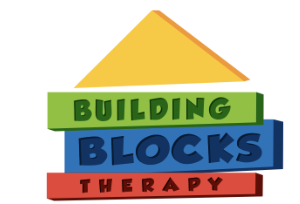10 Month Old Behavior Problems Autism
Identifying Autism-Related Behaviors in 10-Month-Olds

Understanding Early Signs of Autism
Parents and caregivers often wonder how to differentiate between typical developmental behaviors and those indicative of autism in infants. While signs of autism typically appear between ages two and three, many behaviors can manifest much earlier in life. This article delves into potential autism-related behavior problems observed in 10-month-olds, aiming to equip parents with the knowledge to recognize and act on these signs early.
Early Signs of Autism Spectrum Disorder (ASD) in Infants
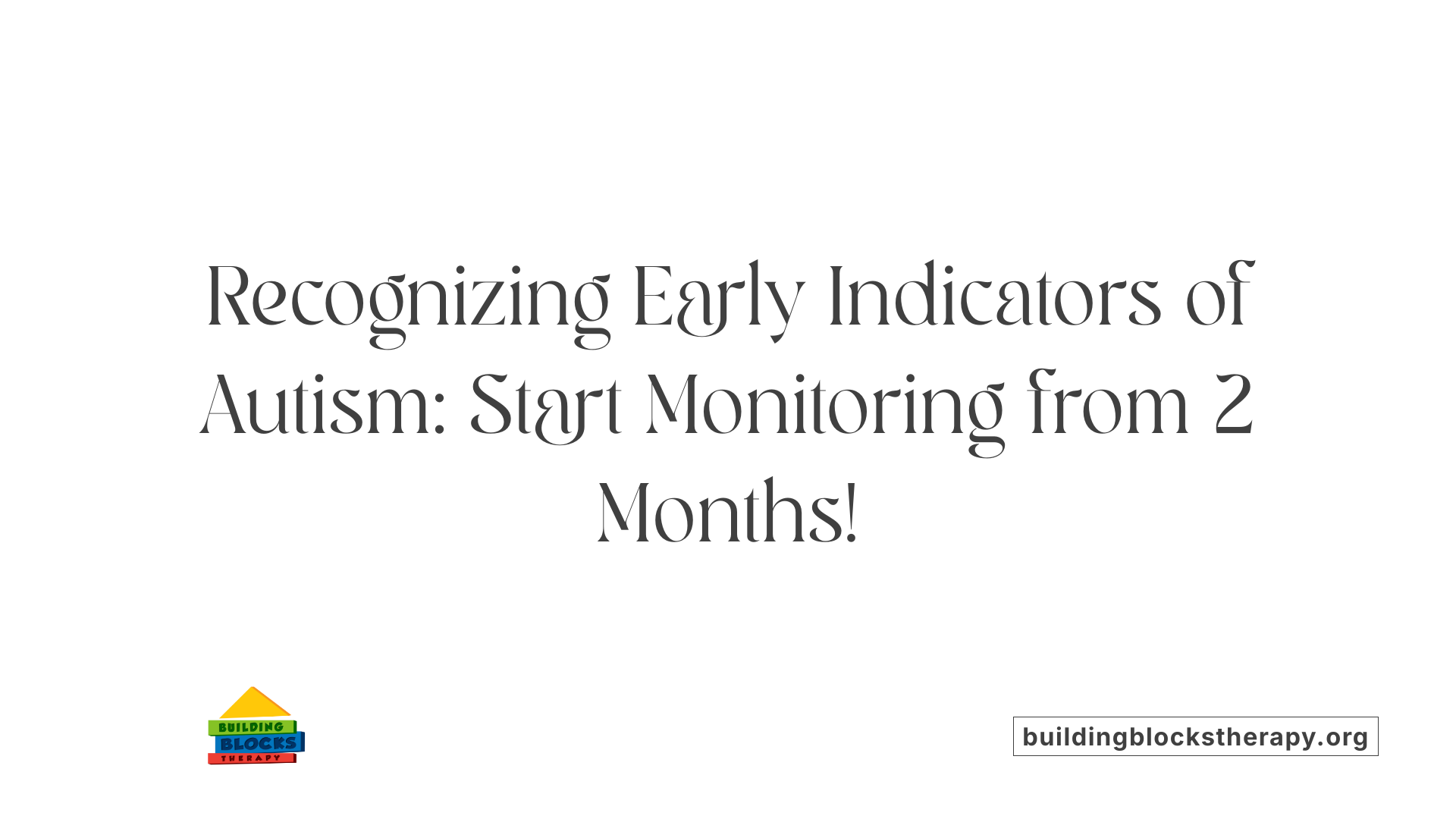
What are the early signs of autism spectrum disorder (ASD) in infants?
Early signs of autism spectrum disorder (ASD) in infants can begin to appear as early as 2 months of age, with noticeable declines in eye contact. Research indicates that infants who develop ASD often start making less eye contact around this age, which could suggest a risk of autism.
By 6 months, warning signs become more pronounced. Infants may show limited eye contact and few big smiles or engaging expressions. They might not respond to social cues, resulting in a lack of shared enjoyment during interactions with caregivers.
As infants reach 9 months, they may exhibit little or no back-and-forth sharing of sounds and facial expressions—a crucial aspect of social engagement. They might demonstrate difficulty with joint attention, which is vital for healthy social interactions.
At 12 months, the indicators further include limited babbling and a lack of gestures such as pointing or waving. A noticeable absence of gestures or response to their name can be concerning.
By 24 months, children with ASD may use very few meaningful two-word phrases, if any, and they might exhibit regression in previously acquired skills, indicating significant developmental delays. This underlines the importance of early screening and intervention to support their development.
Typical vs. Atypical Developmental Behaviors at 10 Months
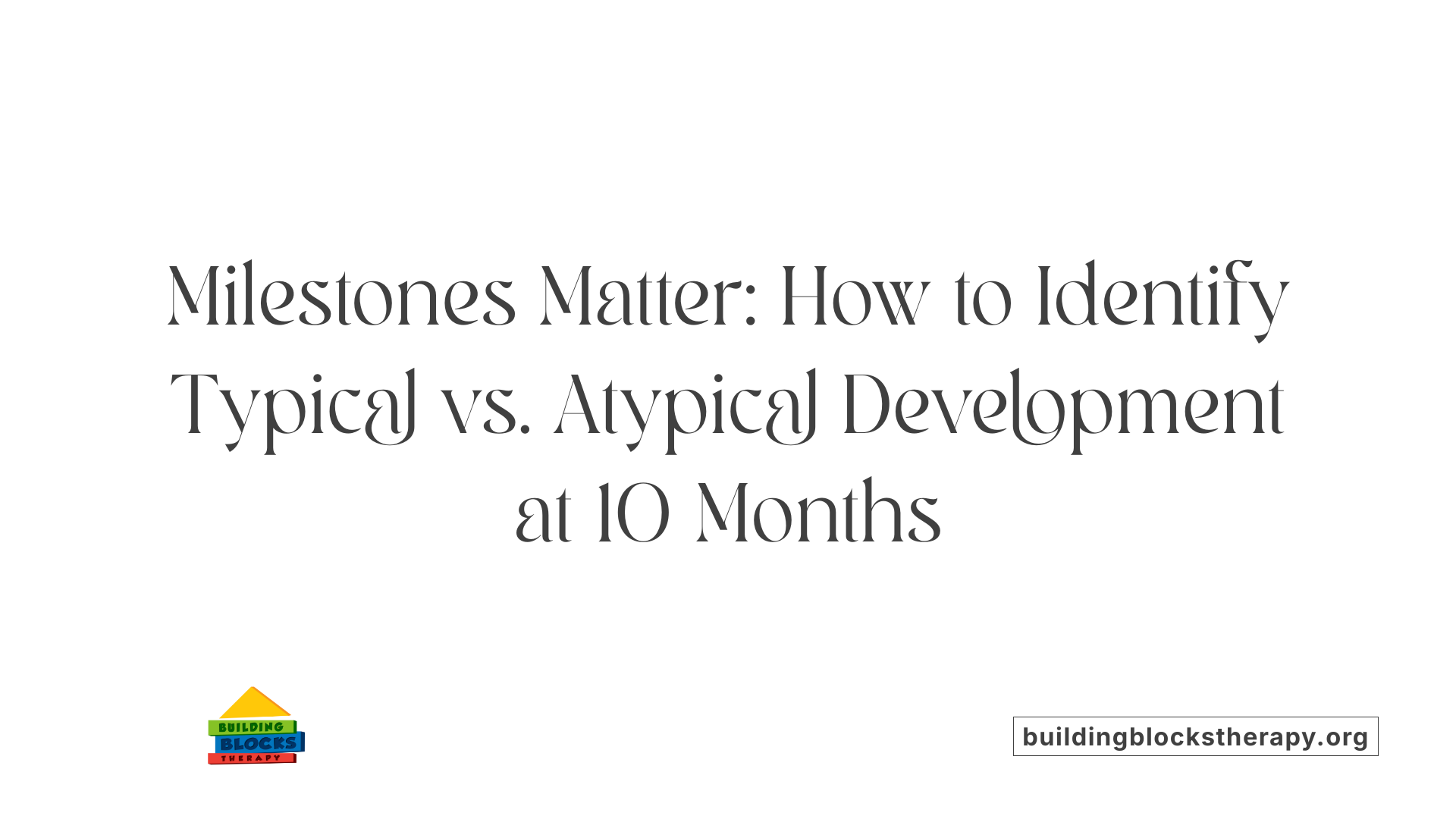
Key Developmental Milestones at 10 Months
At 10 months, infants typically reach several important developmental milestones. They should:
- Crawl on all fours: This establishes physical independence and motor skills.
- Make regular eye contact: Meeting the gaze of caregivers is crucial for developing social interactions.
- Engage in vocal experimentation: Sounds like intentional coughing or squealing are common during this stage.
These behaviors signify growing awareness of their surroundings and social engagement.
Differences in Motor Skills, Speech, and Social Interaction
In differentiating typical from atypical behaviors, parents can observe specific areas.
Typical Behaviors:
- Crawling and mobility: Most infants should be crawling and exploring their environment.
- Responding to their name: By this age, children generally respond when called, indicating recognition.
- Social smiles: Engaging with caregivers by smiling back fosters connection.
Atypical Behaviors:
- Not crawling: Some babies may avoid moving, which can be a red flag for developmental issues.
- Limited or no eye contact: A significant indicator of potential social delays or autism spectrum disorder (ASD).
- Lack of social responses: Indicators may include not responding to their name or showing minimal emotional expression.
How can parents differentiate between typical and atypical developmental behaviors at 10 months?
Parents can differentiate between typical and atypical developmental behaviors at 10 months by observing key milestones in motor skills, speech, and social interaction. Typical behaviors include crawling on all fours, responding to names, and demonstrating social smiles. Atypical behaviors might include significant delays in these areas, such as not crawling at all or showing a lack of interest in social interaction. It's also important for parents to consider cultural differences, as some behaviors may be typical in certain cultures but viewed as atypical in others. Regular monitoring and screening can help identify potential developmental concerns, allowing for early intervention if necessary.
Common Autism Signs in Babies Aged 6 to 12 Months
What are common signs of autism in babies aged 6 to 12 months?
Common signs of autism in babies during this age range can include a variety of behavioral patterns and developmental delays. These signs are crucial for parents to observe and can serve as early indicators of autism spectrum disorder (ASD).
Limited Eye Contact and Gestures
Babies should typically begin making eye contact and engaging socially by 2 months. However, those at risk for autism may show limited eye contact or struggle with joint attention, which is sharing focus with caregivers. By about 9 months, infants are expected to respond to their names, but many autistic infants do not respond, indicating potential developmental concerns.
Delayed Language Development
Another key area is language development. By 12 months, children are usually babbling and starting to use simple gestures, such as waving or pointing. However, infants who might be at risk for autism often show delayed language skills, with many exhibiting little to no babbling. By 15 months, around 40% of autistic children fail to say any words or use gestures to communicate.
Repetitive Movements
Repetitive movements and behaviors may also be observed. Infants might engage in movements like hand flapping or rocking, and some may display unusual sensory sensitivities, reacting strongly to certain sounds or textures. These behavioral patterns could signal atypical development and warrant further discussion with a healthcare provider.
Overall, if parents observe these early signs, it’s essential to consult a pediatrician for timely evaluation and potential intervention.
Biggest Red Flags for Autism in Infants
What are some of the biggest red flags for autism in infants?
Identifying early indicators of autism spectrum disorder (ASD) is crucial for timely intervention. Some significant warning signs in infants include:
Impairments in Social Interaction:
- Lack of Eye Contact: Infants may avoid making eye contact or gaze at their caregivers.
- Limited Expression: A noticeable absence of warm, joyful expressions or social smiles can be a red flag.
- Unresponsiveness: Failing to respond to their name by 9 months is concerning. Additionally, infants may not show interest in sharing experiences or enjoyment during interactions.
Impaired Communication:
- Gestures: Autistic infants may not use gestures commonly expected at their age, such as pointing or waving.
- Vocal Patterns: They might exhibit unusual prosody, often babbling in a monotonous tone instead of varying their pitch.
Repetitive Behaviors and Restricted Interests:
- Repetitive Movements: This may include hand flapping or rocking.
- Unusual Object Engagement: Infants might insist on carrying objects around obsessively, showing distress if those items are removed.
Recognizing these behaviors early can lead to important evaluations. Parents should monitor their child's development closely, as early intervention has been shown to lead to better outcomes.
Specific Infant Behaviors That May Indicate Autism
What specific behaviors in infants might indicate autism?
Several early behaviors may signal the presence of autism spectrum disorder (ASD) in infants.
Lack of Eye Contact
From as early as 2 months, infants exhibiting limited eye contact can raise concerns. By 9 months, many typically developing infants will frequently make eye contact and engage with caregivers. However, those at risk for ASD may avoid eye contact, which can be a distinctive marker of social engagement difficulties.
Minimal Babbling and Gestures
By 12 months, a lack of babbling or gestures can suggest delays in communication. Typical infants will usually begin to babble and use simple gestures like pointing or waving. Autistic infants often show a significantly reduced frequency of these communicative actions.
Delayed Language Development
Language development milestones further aid in identifying early signs of autism. Approximately 40% of autistic children are nonspeaking by 15 months, highlighting the stark contrast to their peers who typically start producing a few words by this age. Furthermore, by 24 months, many children with ASD may not use meaningful two-word phrases, indicating substantial delays.
The importance of identifying these behaviors cannot be overstated. Early detection enables timely intervention, crucial for improving developmental outcomes.
| Behavior | Typical Development | Possible Sign of ASD |
|---|---|---|
| Eye Contact | Frequent by 2 months | Limited or absent by 2-9 months |
| Babbling | Begins around 4-6 months | Minimal or absent by 12 months |
| Gestures | Uses gestures like pointing by 12 months | Rarely uses gestures like pointing or waving |
| Response to Name | Responds by 9 months | Often does not respond by 9 months |
| Language Skills | A few words by 15 months | Less than expected or nonspeaking by 15 months |
Recognizing these behaviors can empower parents to discuss any concerns with healthcare providers, leading to critical evaluations and supports for their child's development.
Exploring Repetitive Behaviors in 10-Month-Old Toddlers
Can repetitive behaviors in a 10-month-old be a sign of autism?
Repetitive behaviors in infants, particularly at around 10 months, often raise concerns for parents monitoring for signs of autism. While it is normal for babies to exhibit various repetitive actions during exploration or to self-soothe, certain behaviors can signal potential autism spectrum disorder (ASD).
Normal exploration vs. concern for autism
At this age, infants are typically engaged in learning about their environment through play, which might include repetitive motions like shaking toys or rocking back and forth. These behaviors are typically normal parts of development. However, unusual patterns, such as intense fixation on a specific toy or excessive repetitions, may warrant closer observation.
Types of repetitive behaviors in infants
Some common repetitive behaviors observed in 10-month-olds include:
| Behavior Type | Description | Concern Level |
|---|---|---|
| Hand flapping | Quick movements of the hands in a repetitive way | Moderate |
| Rocking | Swaying back and forth while sitting or standing | Moderate |
| Object fixation | Intense focus on a particular toy | High if excessive |
| Repeated vocalizations | Making the same sounds over and over | Moderate |
If you notice these behaviors combined with signs like limited eye contact, lack of social smiles, or not responding to their name, it could indicate a need for further evaluation. Early discussions with a healthcare professional can provide clarity and support for parents who are concerned.
Importance of Monitoring Developmental Milestones
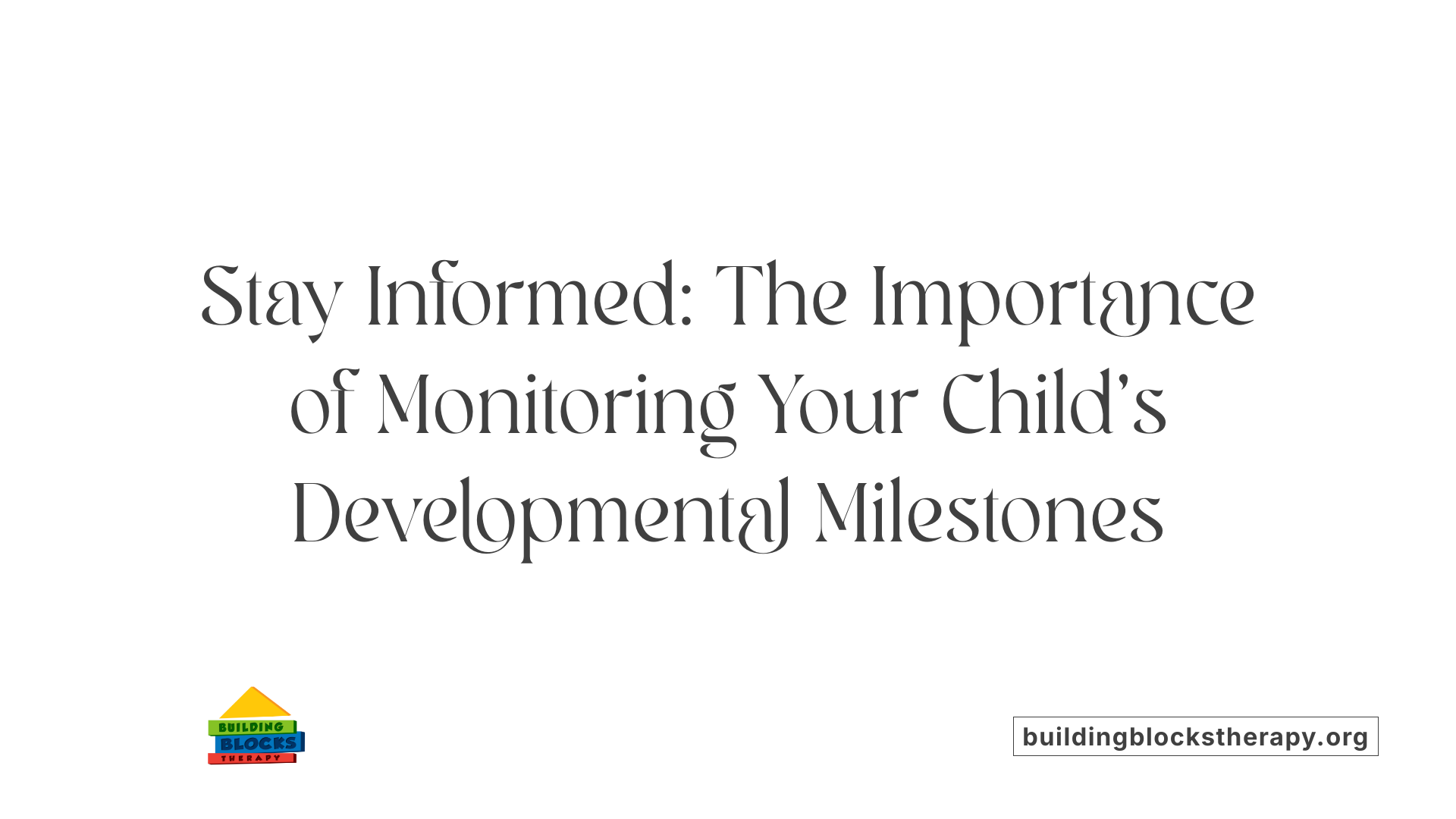
Why is monitoring developmental milestones and recognizing signs of risk important?
Monitoring developmental milestones and recognizing signs of risk are crucial for identifying potential developmental delays in children. This proactive approach enables caregivers and healthcare providers to observe a child's growth across various domains, including motor, language, and social skills.
Early detection of delays enables timely interventions, which can significantly improve developmental outcomes and help children reach their full potential. For instance, specific early signs of autism spectrum disorder (ASD) such as avoiding eye contact, not responding to their name, or delays in speech can be recognized as early as 2 months to 24 months of age. By identifying these concerns promptly, parents can initiate conversations with healthcare professionals to explore testing and appropriate strategies.
Additionally, understanding these milestones reassures parents about their child's progress and informs them when to seek further evaluation. Here are some key reasons to monitor developmental milestones:
| Milestone Age | Key Developmental Focus | Signs of Concern |
|---|---|---|
| 2 months | Eye contact and social engagement | Limited eye contact |
| 6 months | Response to name and vocalizations | Not responding to name |
| 9 months | Joint attention and gestural communication | Few pointing gestures |
| 12 months | Babbling and simple gestures | No babbling or pointing |
| 15 months | Language development and social skills | Lack of speaking or gesturing |
| 24 months | Two-word phrases and engagement | Limited language use |
Ultimately, these practices support not only child development but also empower families to advocate for necessary services.
Timing for Seeking Professional Autism Evaluation
When should parents seek professional evaluation for potential autism concerns?
Parents should be vigilant and seek evaluation if they notice signs of developmental delays or unusual behaviors in their child. Early signs of autism can include:
- Avoiding eye contact
- Limited gestures like pointing or waving
- Not responding to their name by 9 months
- Delayed language development, such as not using single words by 16 months
- Unusual social interactions, like limited smiles or lack of engagement with caregivers
The American Academy of Pediatrics strongly recommends that developmental screening be conducted at 18 and 24 months. Parents, however, can initiate evaluations if they have concerns before these ages. Examples of concerns to address include delays in reaching social milestones or unusual behavioral patterns.
Signs that warrant further evaluation
Parents should consider seeking a comprehensive evaluation if their child exhibits any of the following:
- Fewer expressive vocalizations, like babbling or sounds, by 12 months
- Repetitive movements (such as hand flapping) or unusual sensory responses
- Difficulty maintaining joint attention, for instance, struggling to follow pointing gestures These behaviors often indicate that further investigation is warranted to explore potential autism spectrum disorder.
Early diagnosis can lead to timely interventions that significantly benefit children’s development and learning.
Understanding the Role of Parental Observations
Early Parental Insights on Autism Signs
Parents play a crucial role in the early identification of autism spectrum disorder (ASD). Research shows that many parents begin to notice early warning signs before their child reaches 2 years old. These signs can appear as early as 2 months and typically include behaviors like limited eye contact and not responding to their name.
Some common concerns parents report include:
- Lack of social smiling.
- Difficulty in joint attention, such as sharing focus with caregivers by 9 months.
- Limited gestures, like pointing for help or to express desires by 15 months.
Importance of Parental Concerns for Early Diagnosis
Parental observations are critical, as the CDC indicates that 80 to 90 percent of parents notice developmental differences by age 2. Early detection is vital for accessing interventions that can support a child’s growth and learning. Delayed diagnosis may result in missed opportunities for early therapeutic support, which can significantly impact a child’s development trajectory.
In summary, parents’ insights and timely concerns about their child's social and communicative behaviors can lead to earlier evaluations and, consequently, earlier interventions for ASD.
Signs of Autism and the Importance of Early Screening
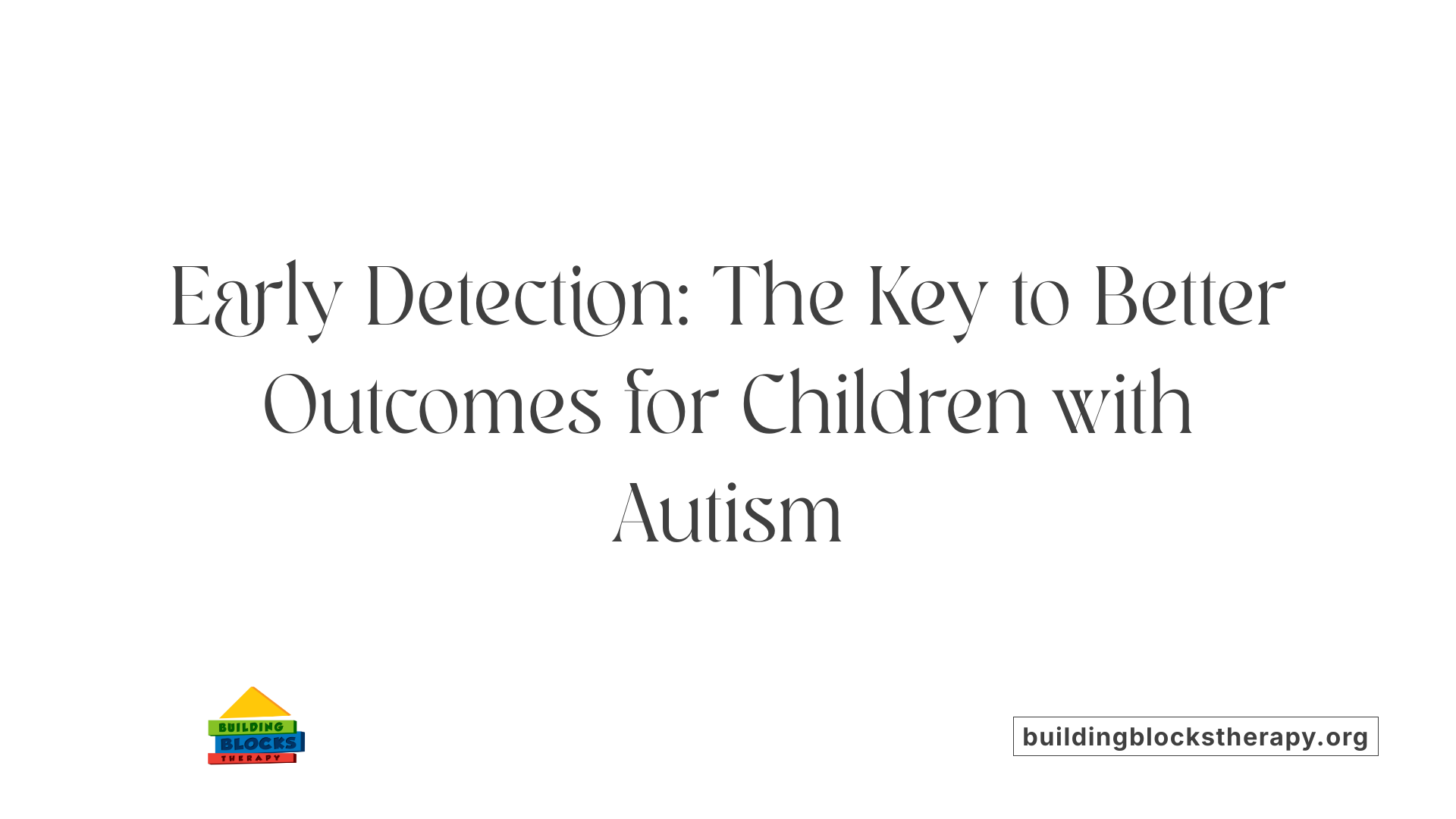
Impact of early detection
Early detection of autism spectrum disorder (ASD) plays a critical role in a child's development. Recognizing early signs—such as limited eye contact, not responding to their name, and delays in language—can lead to timely interventions.
Research indicates that about 80 to 90% of parents notice some developmental differences by the time their child reaches 2 years old. Early evaluation allows children to access the support they need to thrive, significantly impacting their ability to communicate and engage socially by school age.
Screening tests and guidelines
The American Academy of Pediatrics recommends that children be screened for autism at ages 18 and 24 months. This proactive approach is essential since autism can be detected in some infants as early as 6 months.
Screening tools like the Autism Observation Scale for Infants (AOSI) are designed to identify red flags early on, facilitating prompt discussions between parents and healthcare providers about any concerns regarding a child’s development.
By understanding and recognizing these early warning signs, parents and caregivers can better advocate for their children's needs, ultimately enhancing their opportunities for growth and learning.
Evaluating the Impact of Developmental Delays
Association between delay and autism
Developmental delays in infants often raise concerns about potential autism spectrum disorder (ASD). Notable signs like avoiding eye contact, delayed responses to names, and limited gestures can appear as early as 6 to 12 months. These early indicators, including a lack of social smiling and poor visual tracking, are critical for recognizing potential risks.
Studies have shown that behaviors such as reduced eye contact and delayed language skills correlate strongly with ASD. By the time a child reaches 15 months, many autistic children show fewer gestures, like pointing or waving, which are significant for communication development.
How delays affect future development
The impact of these developmental delays can be profound. Early identification of behaviors suggesting autism allows for timely interventions, which can significantly alter the developmental trajectory of affected children.
For instance, children with ASD may struggle with social interaction and communication well into their early childhood years if delays are not addressed. Common outcomes include challenges in forming relationships and engaging in typical play patterns. When parents and caregivers recognize these signs early, discussions with healthcare providers can lead to targeted strategies to support development. Ultimately, as many parents observe differences before age two, fostering early conversations about potential ASD can enhance outcomes for these children.
Resources for Parents Navigating Infant Development and Autism
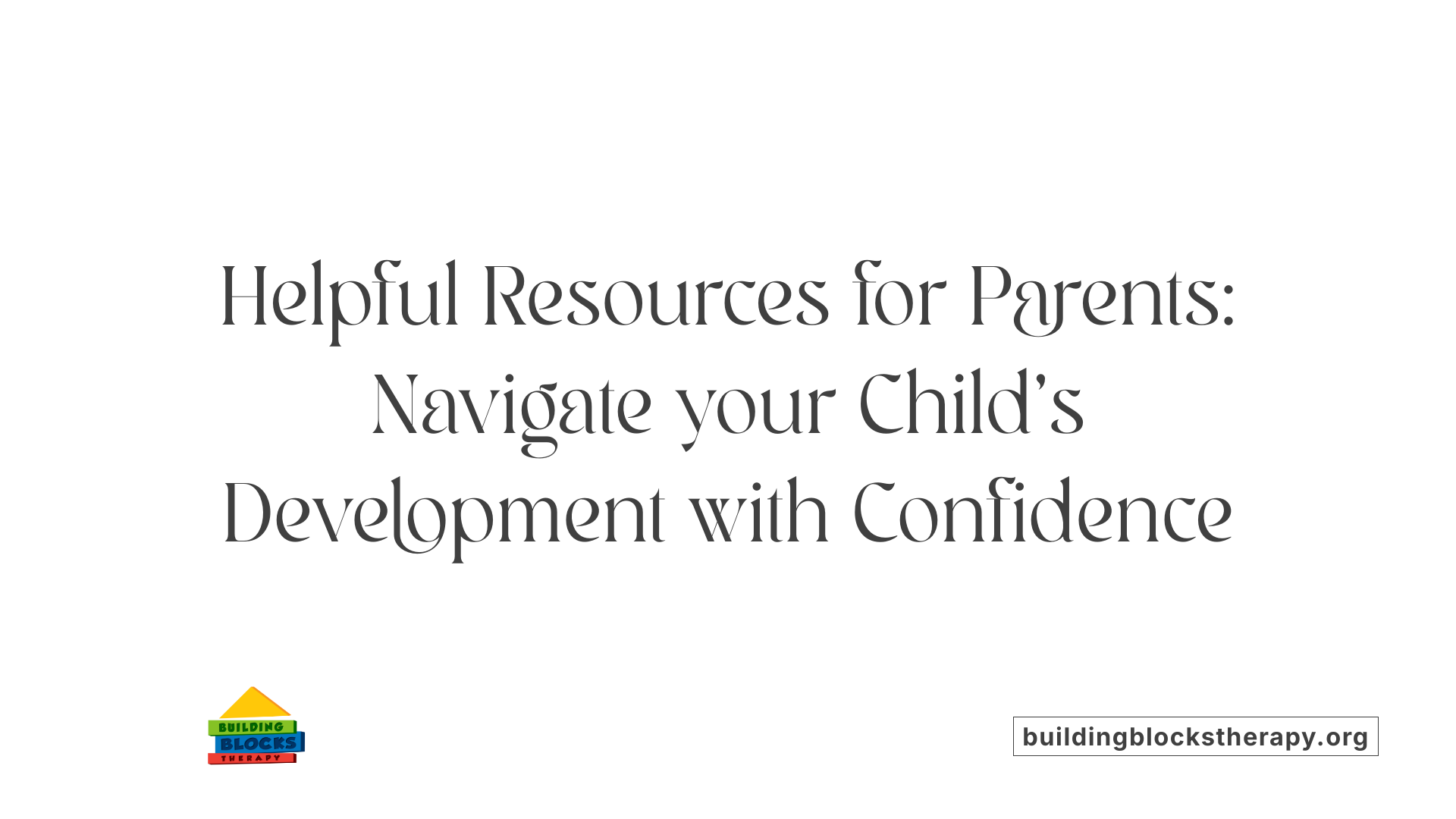
What resources are available for parents to interpret their child's behaviors related to autism?
Parents looking to interpret their child's behaviors related to autism have several valuable resources at their disposal. One notable publication is "A Parent’s Guide to Autism", which offers practical advice and strategies designed to assist families navigating early signs of autism.
Additionally, Children's National provides a Family Resources Notebook filled with tips specifically for caregivers of children with autism. These tools are particularly helpful for identifying and understanding behaviors that may signal developmental concerns.
Online resources complement these guides. Organizations like the Autism Science Foundation and Autism Society offer reliable information and support, making it easier for parents to learn about autism's characteristics and intricacies.
Moreover, Autism Speaks has a comprehensive Resource Guide that emphasizes the criticality of early detection. This guide provides tools for screening autism and includes videos, FAQs, and behavioral treatment guidance, empowering parents to understand and manage their child's behaviors effectively.
Community and Support Systems
In addition to informational resources, connecting with community and support groups can be invaluable. Many local and online support networks offer forums for parents to share experiences, insights, and advice. These communities often provide emotional support and practical solutions to common challenges associated with raising a child on the autism spectrum. Engaging with other families who have similar experiences can be reassuring and informative, helping parents feel less isolated in their journey.
Empowering Parents Through Knowledge and Support
Recognizing early signs of autism in infants is a critical step for parents aiming to provide timely support and interventions. Through vigilance and access to appropriate resources, caregivers can navigate the challenges associated with atypical developmental behaviors and ensure the best outcomes for their children. By understanding the nuances of early developmental indicators and trusting their instincts, parents lay the groundwork for informed discussions with healthcare professionals, ultimately creating a supportive environment that facilitates growth and learning for their child.
References
- Autism in babies: Signs, diagnosis, and next steps
- [PDF] Early Warning Signs of Autism Spectrum Disorder - CDC
- 10 Month Old Baby Development & Behavior - Mercy
- Early Signs of Autism in Babies and Newborns - Parents
- Signs of autism | Autism Speaks
- Early Signs of Autism - UCSD Neurosciences
- Recognizing the Signs of Autism in Babies - Healthline
